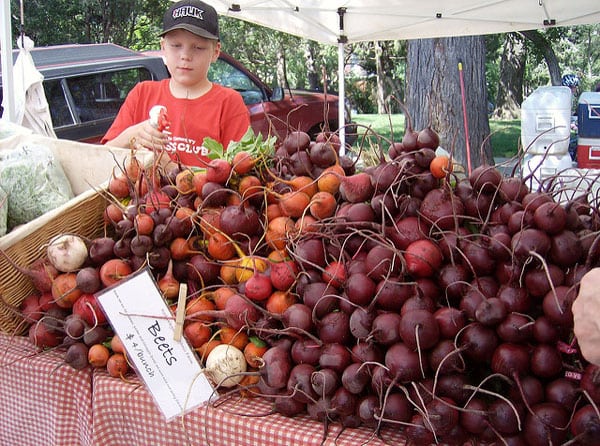
July 19, 2018; American Prospect and Washington Post
Thanks to a nonprofit group, local farmers and Supplemental Nutrition Assistance Program (SNAP) eligible families have an additional 30 days to process farmers’ market purchases with a SNAP credit.
After the US Agriculture Department announced it would cut funding and switch processing vendors from Novo Dia to Financial Transaction Management, Novo Dia announced it would be forced to end its service on July 31st.
The potential loss of revenue for farmers, and loss of access to fresh fruits and vegetables for low-income families, is a looming national crisis. That’s where a nonprofit stepped in.
According to their press release, The National Association of Farmers Market Nutrition Programs (NAFMNP) is providing Novo Dia Group operational funding for an additional 30 days so that stakeholder states will not experience any disruption in processing federal nutrition electronic benefits, including SNAP.
NAFMNP represents 45,000 farmers and 8,000 farmers markets across the country, and the announcement that Novo Dia Group (NDG) decided to close their processing platform used for SNAP, credit and debit would directly affect many of these stakeholders. This potential shutdown of service could translate to lost sales in the millions of dollars processed through farmers markets.
Sign up for our free newsletters
Subscribe to NPQ's newsletters to have our top stories delivered directly to your inbox.
By signing up, you agree to our privacy policy and terms of use, and to receive messages from NPQ and our partners.
Steven Rathgeb Smith observed in an older NPQ article on the dynamics between government and nonprofits that “government has an obligation to ensure that nonprofit services are provided equitably and adequately so that citizens can achieve full social and political citizenship.” While what specifically is encompassed under social and political citizenship is broad, this current scenario highlights what happens when a nonprofit needs to course correct to keep that opportunity for communities in place.
In a time when our country is plagued with unpredictable bills and funding cuts, what is the true role of the nonprofit? NAFMNP—which collects funds via memberships and dues—stands as an indication that it’s more than a niche. The balance between government and nonprofit will continue to be a tug-of-war when gaps in government funding disrupt both small business and a segment of the community, and nonprofits like NAFMNP attempt to save the day.
If scenarios like the SNAP funding disruption continue, it will be key to keep an eye on how nonprofits adjust. Do we risk losing long-term strategy and mission focus when funds are used to fill unexpected gaps? Will the ability to plan for the future become muddled beneath the chaos?
It also raises the question as to whether nonprofits who are greatly dependent upon government funding will need to shift focus to new funding sources and methods, which could prove daunting as we navigate the impact of new tax laws that relate to donations. This situation, while still unfolding, is a true reminder that no funding stream can ever be a permanent solution.
The messaging of fundraising could also change when filling in government gaps. While many advocacy nonprofits weave politics and relevant legislation into communications, the purpose behind donation needs for broader nonprofits may need to adopt this lens. This is especially true for a potential future where donating to local charities may have a greater impact on a community than paying state or federal taxes.—Kelly Phipps











